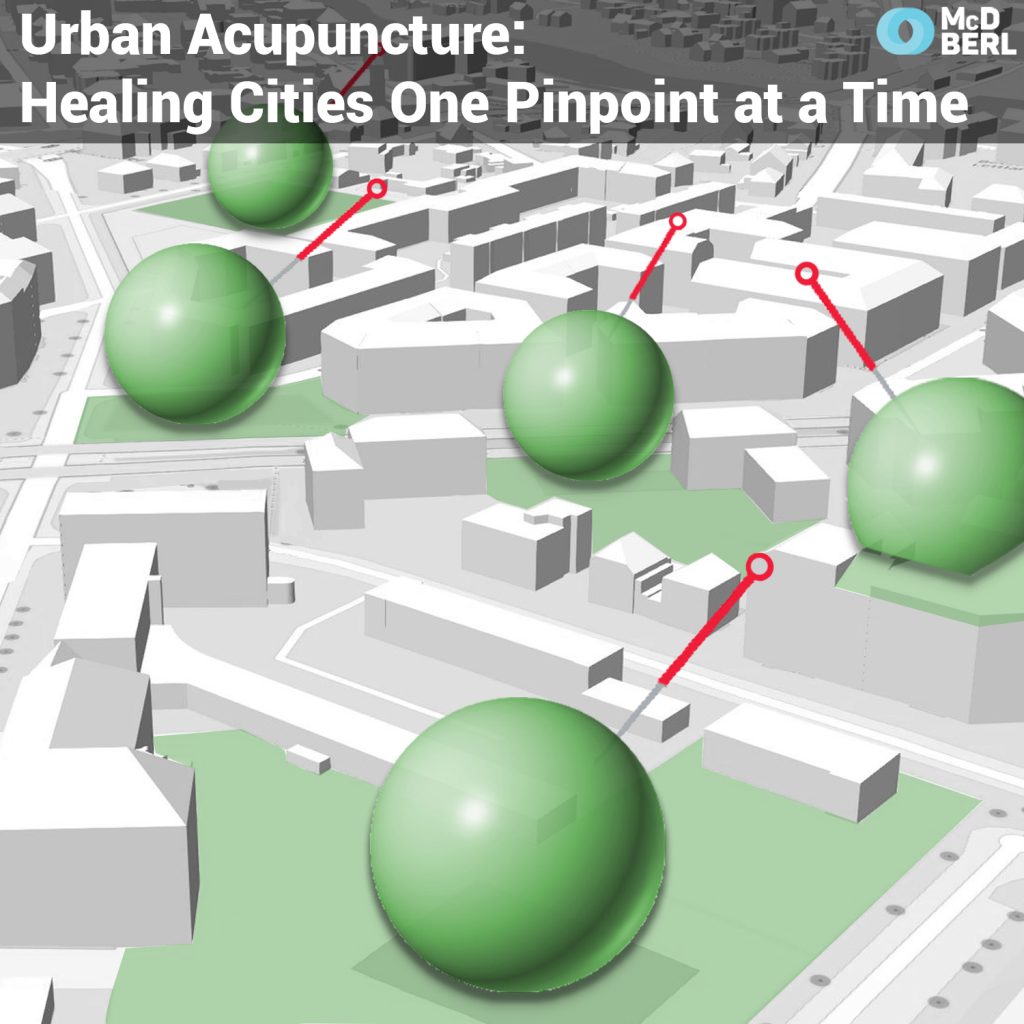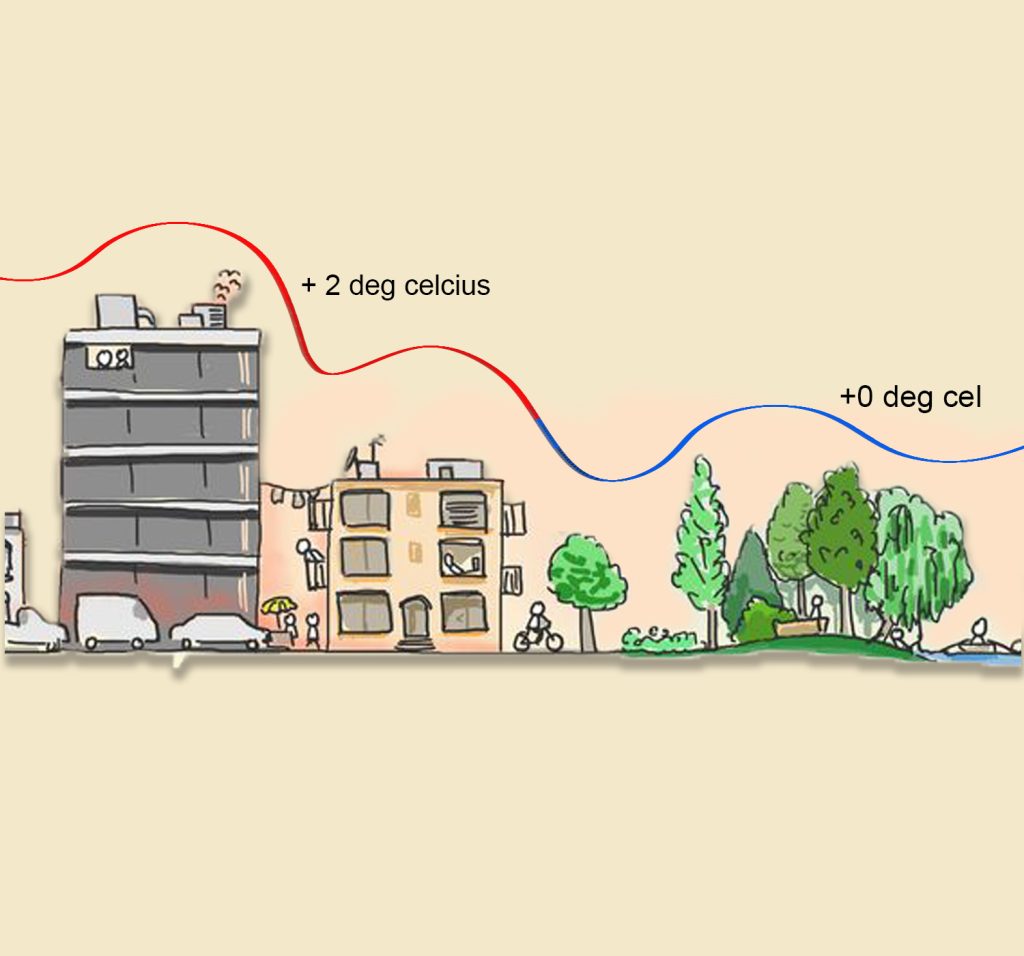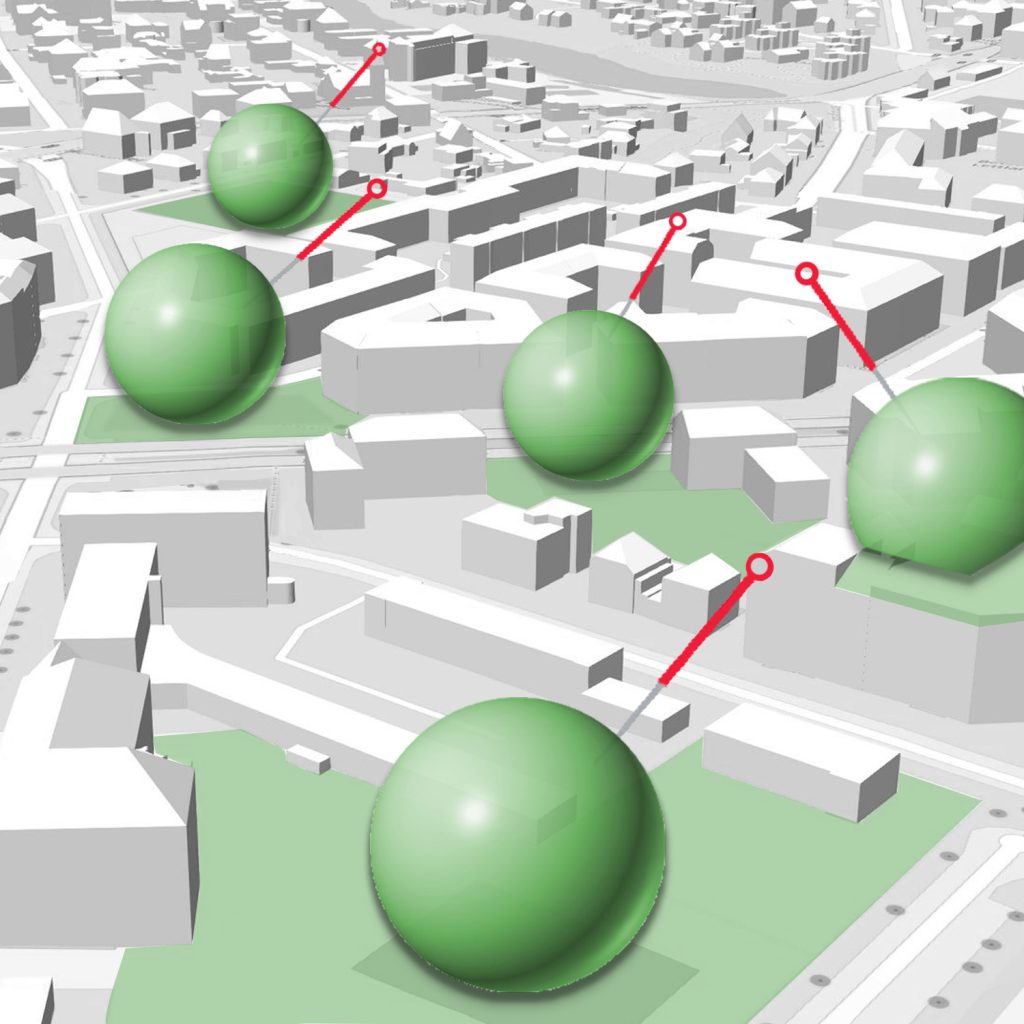Urban Acupuncture: Healing Cities One Pinpoint at a Time

A novel approach to urban planning and rehabilitation known as “urban acupuncture” sees cities as living things in need of focused measures. To support sustainability, health, and vibrancy. Inspired by the traditional Chinese medicine of acupuncture, which stimulates body points with well-placed needles to facilitate healing, urban acupuncture locates important points in urban settings and applies small-scale interventions to address regional issues and enhance general health. The foundations of urban acupuncture, its uses, and its promise to make cities more resilient and habitable are all covered in this article.
Effects of Urban Acupuncture
Urban acupuncture, as an approach to urban design and revitalization, demonstrates significant potential in mitigating various urban challenges and enhancing the quality of life for urban residents. The below are the effects of creating urban acupuncture spaces.
1.UHI Reduction:
- Urban acupuncture interventions, such as the strategic placement of green infrastructure, including parks, green roofs, and street trees, can help mitigate UHI effects by providing shade, evaporative cooling, and reducing surface temperatures.
- By increasing vegetation cover and reducing impervious surfaces, urban acupuncture promotes natural cooling mechanisms and enhances thermal comfort in urban environments, thereby reducing the intensity of UHI effects.

2.Overall Temperature Reduction:
- In addition to mitigating UHI effects, urban acupuncture contributes to overall temperature reduction in urban areas by creating microclimates that are cooler and more comfortable for residents.
- Green spaces act as natural heat sinks, absorbing solar radiation and releasing it through evapotranspiration and shading, thereby lowering air and surface temperatures.
3. Enhancement of Biodiversity:
- Urban acupuncture supports the enhancement of biodiversity by creating habitats for diverse plant and animal species within urban areas.
- Green spaces and ecological corridors established through urban acupuncture provide refuge and resources for wildlife, including birds, insects, and small mammals.
- By increasing habitat connectivity and promoting native plantings, urban acupuncture fosters biodiversity and ecological resilience in urban ecosystems, contributing to the conservation of urban biodiversity and the provision of ecosystem services.
4.Creation of Breathing Spaces:
- Urban acupuncture creates breathing spaces in urban areas by introducing greenery, public parks, plazas, and pedestrian-friendly streetscapes.
- These spaces serve as recreational areas, social gathering places, and havens of tranquillity amidst the hustle and bustle of urban life.
- By providing opportunities for relaxation, exercise, and social interaction, breathing spaces improve mental and physical well-being and contribute to the overall liability and attractiveness of urban neighbourhoods.

Principles of Urban Acupuncture
- Localised Interventions: Rather than large-scale urban redevelopment programmes, urban acupuncture focuses on small-scale, site-specific interventions. Urban acupuncture aims to address localised problems and stimulate beneficial change from the ground up by identifying specific places of intervention, such as abandoned lots, underutilised locations, or neglected neighbourhoods.
- Community Participation and Engagement: This constitutes a cornerstone of urban acupuncture practice. Initiatives are frequently designed by working with stakeholders, companies, and locals to guarantee that interventions align with the community’s interests and needs. This bottom-up strategy improves social cohesiveness by giving residents a sense of empowerment and ownership.
- Multi-Functional Design: Urban acupuncture initiatives are made to fulfil several purposes and concurrently treat a range of urban problems. For instance, a community garden may be created on an empty lot to offer social interaction possibilities, food production, and green space. Urban acupuncture enhances the effects and advantages of every project by combining several purposes into one intervention.
Urban acupuncture offers a holistic and people-centred approach to urban development that recognizes the interconnectedness of social, economic, environmental, and health factors shaping cities. By harnessing the power of small-scale interventions, community engagement, and multi-functional design, urban acupuncture has the potential to revitalize neighbourhoods, strengthen communities, and create more resilient and equitable cities for all. In an era of rapid urbanization and global challenges such as climate change, urbanization, and social inequality, urban acupuncture provides a valuable framework for reimagining and transforming cities into healthier, more sustainable, and inclusive places for people to live, work, and thrive.




